Rakshasas: Night Wandering Race Of Demons And Warriors Fuelled By Kundalini In Hindu Beliefs
A.Sutherland - AncientPages.com - In Hindu beliefs, the rakshasas were a terrible danger to all living creatures, and especially to their enemies.
Sculptures of Rakshasa in Thailand. Credit: Stock Photo
As master magicians, the rakshasa warriors were equipped with psychic and magical abilities fueled by divine and powerful energy known as kundalini.
One story tells that when the rakshasas die, they are judged by their great king, Ravana. Those among the rakshasas with extraordinary magic powers and cunning are reborn as even more powerful creatures.
Their greatest rakshasa - Ravana, will also someday return because, as Ravana foretold before his last battle, he would be reborn one more time into the world.
His task will be to enslave the world forever. However, it will be difficult as his ancient nemesis - an arch-enemy - will also return one day with a flaming sword mounted on a white horse.
Who Are The Rakshasas?
The rakshasas dwelled in abandoned trees, forgotten caves, and distant mountain slopes.
The rakshasas were believed to be part animal and part human. However, their appearance varies widely, which deepens on sources. Based on the Hindu religious texts, they had five legs and a hideous body covered with blood. Later depictions show them having copper-colored faces with fire-colored red hair, long tongues, and protruding fangs. Some had long arms, some were fat, and others were lean.
They were given many different names, such as cannibals, biters, night-stalkers, vampires, dark-faces, and many more.
Their look was considered intimidating, as were the awful sounds they made. Their cannibalistic nature and killing of animals and people by ripping their bodies in a very unusual, gruesome way spread fear.
As skilled shapeshifters capable of changing their look at their will at any moment, the rakshasas were masters of deception. These hideous demons could even look beautiful (predominantly female rakshasas, called rakshasis, could shapeshift into beautiful women) to satisfy their plans of deceiving humans.
Rakshasas Symbolize Tamas - The Dark Nature
According to Hindu beliefs, the Rakshasas symbolize the dark nature of tamas that include many negative qualities, including hatred, domination, aggressiveness, vengeance, self-destruction, and ignorance.
Rakshasa as depicted in Yakshagana, an art form of coastal Karnataka. Credit: Manohara Upadhya, CC BY-SA 3.0
'Rakshasas' (Demons) are associated with tamas – one of three the so-called Gunas (qualities). Two others are Sattva and Rajas, according to Hindu Philosophy.
These three qualities (gunas) are the primary energies from which the universe evolved. The qualities attributed to the Devas (Gods) are identified with Sattva, those of Manushya (Humans) with Rajas, and those of Rakshasas (Demons) with Tamas.
Tamas inflicts wounds and indescribable suffering, which is incompatible with dharma, an old and very complex concept with multiple meanings in Indian religions, such as Hinduism, Buddhism, Jainism, Sikhism, and others.
Perhaps the most straightforward meaning of 'Dharma' is "right way of living" and "path of rightness."
Rakshasas Once Served Brahma
In Hindu beliefs, the rakshasas formerly served Brahma, the creator god and one of the Hindu Trimurti, as guardians of the precious primeval waters of the earth. These terrible creatures were Brahma's creation to protect the ocean from those who tried to steal the elixir of immortality, the amrita, from the depths of the cosmic ocean.
With time, they changed, became real monsters, and turned their backs on him.
As a result of their degeneration, they began to demonstrate their cannibalistic and evil nature, raping women, drinking their blood, interrupting sacrificial ceremonies, and harming humans and animals. Their favorite time of activity was night.
The most famous representative of the rakshasas was the King of Lanka, Ravana, who kidnapped Sita, wife of King Rama, the seventh avatar of the god Vishnu, one of his most popular incarnations along with Krishna and Gautama Buddha, as narrated in Ramayana, a famous epic of ancient India.,
The history of Ravana only emphasizes all the negative qualities of the Rakshasas as evil demons that can also incarnate in human bodies. Among many Hindus, it is strictly forbidden to utter the name 'rakshasa' because it may provoke an evil spirit.
Is There A Way to Kill The Rakshasa Demon?
It is believed that an exorcism, a complex and dangerous part of magic, can kill the rakshasas; extended exposure to sunlight and burning the creature to ash can be another effective way to get rid of it.
Written by – A. Sutherland - AncientPages.com Senior Staff Writer
Updated on February 22, 2024
Copyright © AncientPages.com All rights reserved. This material may not be published, broadcast, rewritten or redistributed in whole or part without the express written permission of AncientPages.com
Expand for referencesThe Essence of the Bhagavad Gita, explained by P K. Jaya Shekhar,
Hyatt V. The Book of Demons
Jaya Shekhar, The Best Bet: Forming the Right Relationships and Making the Most of Your Relationships
More From Ancient Pages
-
 New Discovery: 2,000-Year-Old Monumental Street In Jerusalem Built By Pontius Pilate
Archaeology | Oct 21, 2019
New Discovery: 2,000-Year-Old Monumental Street In Jerusalem Built By Pontius Pilate
Archaeology | Oct 21, 2019 -
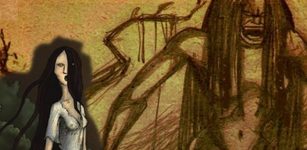 Patasola: Hideous One-Legged Female Vampire Who Kills Driven By Hatred In Colombian Folklore
Featured Stories | Jul 26, 2019
Patasola: Hideous One-Legged Female Vampire Who Kills Driven By Hatred In Colombian Folklore
Featured Stories | Jul 26, 2019 -
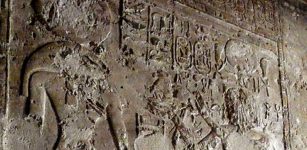 Pakhet ‘Night Huntress’: Egyptian War-Like Lioness Goddess Associated With Artemis
Egyptian Mythology | Mar 4, 2019
Pakhet ‘Night Huntress’: Egyptian War-Like Lioness Goddess Associated With Artemis
Egyptian Mythology | Mar 4, 2019 -
 Hero Stones Belonging to Pallava Era Found Near Tirupattur, India
Archaeology | Oct 15, 2015
Hero Stones Belonging to Pallava Era Found Near Tirupattur, India
Archaeology | Oct 15, 2015 -
 Arizona’s Enigmatic Beehive-Shaped Stone Coke Ovens
Featured Stories | Jul 15, 2023
Arizona’s Enigmatic Beehive-Shaped Stone Coke Ovens
Featured Stories | Jul 15, 2023 -
 Frightening Legend Of Tate’s Hell Swamp And The Curse Of The Native American Medicine Man
Featured Stories | Feb 12, 2022
Frightening Legend Of Tate’s Hell Swamp And The Curse Of The Native American Medicine Man
Featured Stories | Feb 12, 2022 -
 Who Was The Sumerian Ensi?
Featured Stories | Jan 24, 2020
Who Was The Sumerian Ensi?
Featured Stories | Jan 24, 2020 -
 10 Most Bizarre Forms Of Ancient Taxes: Surprising And Funny
Featured Stories | Nov 21, 2016
10 Most Bizarre Forms Of Ancient Taxes: Surprising And Funny
Featured Stories | Nov 21, 2016 -
 China’s Ancient Water Pipes Show People Mastered Complex Engineering Without The Need For A Centralized State Authority
Archaeology | Aug 15, 2023
China’s Ancient Water Pipes Show People Mastered Complex Engineering Without The Need For A Centralized State Authority
Archaeology | Aug 15, 2023 -
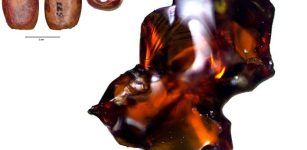 Earliest Baltic Amber In Western Europe Found On The Iberian Peninsula 5,000 Years Ago
Archaeology | Oct 21, 2023
Earliest Baltic Amber In Western Europe Found On The Iberian Peninsula 5,000 Years Ago
Archaeology | Oct 21, 2023 -
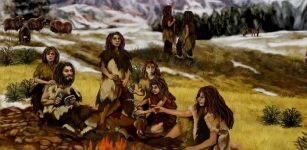 Can Diseases Explain Why Neanderthals Suddenly Disappeared About 40,000 Years Ago?
Archaeology | Nov 9, 2019
Can Diseases Explain Why Neanderthals Suddenly Disappeared About 40,000 Years Ago?
Archaeology | Nov 9, 2019 -
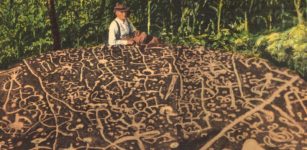 Mysterious Judaculla Rock And The Slant-Eyed Giant Of The Cherokee
Featured Stories | May 8, 2021
Mysterious Judaculla Rock And The Slant-Eyed Giant Of The Cherokee
Featured Stories | May 8, 2021 -
 Stunning Images Of Shackleton’s Lost Ship Endurance Discovered Off The Coast Of Antarctica
Archaeology | Mar 9, 2022
Stunning Images Of Shackleton’s Lost Ship Endurance Discovered Off The Coast Of Antarctica
Archaeology | Mar 9, 2022 -
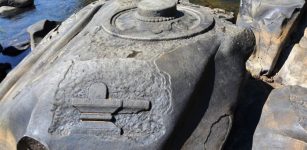 Mystery Of Ancient Carved Shiva Lingas In India And Cambodia
Featured Stories | Oct 12, 2015
Mystery Of Ancient Carved Shiva Lingas In India And Cambodia
Featured Stories | Oct 12, 2015 -
 Why Are Christmas Ghost Stories So Fascinating?
Christmas Traditions | Dec 24, 2019
Why Are Christmas Ghost Stories So Fascinating?
Christmas Traditions | Dec 24, 2019 -
 Controversial Statue Of Anglo-Norman Knight William Marshal In Pembroke Faces Criticism
Artifacts | May 10, 2022
Controversial Statue Of Anglo-Norman Knight William Marshal In Pembroke Faces Criticism
Artifacts | May 10, 2022 -
 Why Is Rome Called ‘The Eternal City’?
Ancient History Facts | May 16, 2024
Why Is Rome Called ‘The Eternal City’?
Ancient History Facts | May 16, 2024 -
 Ancient Giants In Ecuador Were Killed By Fire From The Sky – Indian Legends Reveal
Ancient Mysteries | Dec 12, 2017
Ancient Giants In Ecuador Were Killed By Fire From The Sky – Indian Legends Reveal
Ancient Mysteries | Dec 12, 2017 -
 3,000-Year-Old African Musical Instrument Can Help Modern Medicine
Archaeology | Sep 19, 2018
3,000-Year-Old African Musical Instrument Can Help Modern Medicine
Archaeology | Sep 19, 2018 -
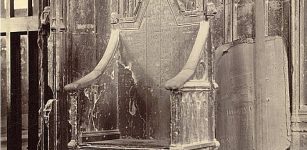 Stone Of Scone: Mysterious Stone Of Destiny Has Turbulent Ancient History
Artifacts | Mar 19, 2016
Stone Of Scone: Mysterious Stone Of Destiny Has Turbulent Ancient History
Artifacts | Mar 19, 2016


